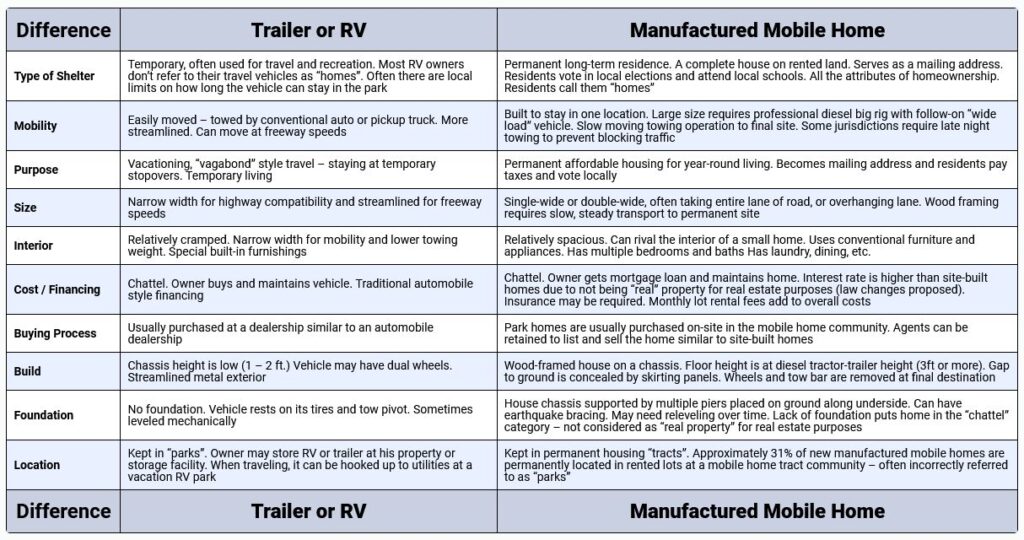The Park Industry – How Your Housing Works
Part 1 of 4
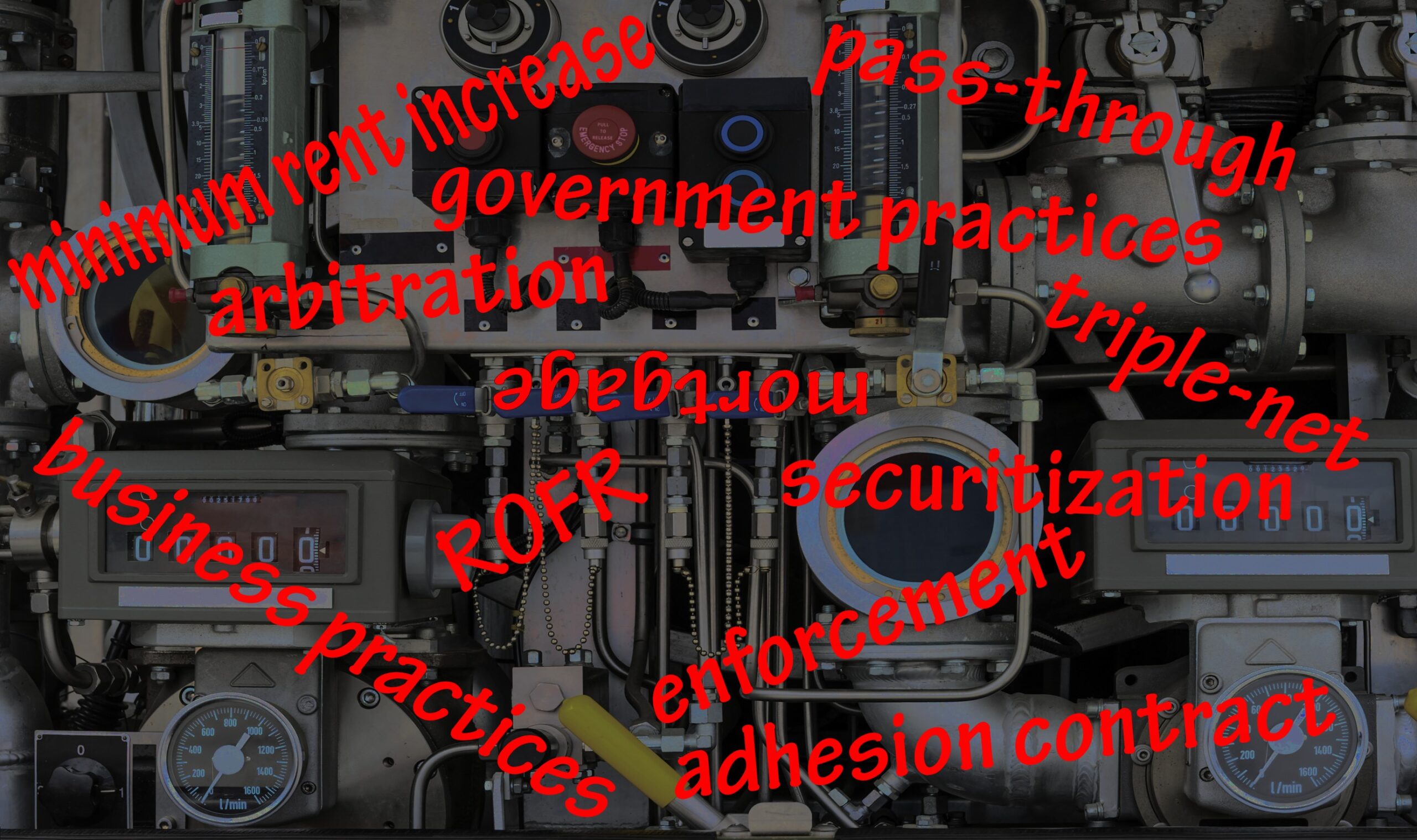
Complicated lease terms homeowners may innocently agree to are explained in the glossary
By:
Mobile Home Park Living Evolves to Greater Comfort But Also Greater Risk
Links to sections (tap to open)
It started simple. Trailer parks and car parks were easy to check into and easy to leave. Mobile home owner risk grew as the homes became houses that were too large to move.
“This complex housing situation has few if any other parallels.”
-Carl Leivo, PhD., Author, MHP Living
Carl Leivo has a Masters in City Planning from Rutgers University and a Doctorate from Southern Illinois University. Doctoral research evaluated regional economic development programs. Carl’s career includes a balance of experience in business, government, and nonprofits.
There’s a lot to unpack about the mobile home park industry and housing. Your house in a mobile home park is utterly dependent upon these business systems – and so is the health of your wallet. It’s a big industry with many supporting businesses. And mobile home parks are among the most complex of housing options. The more you know, the better you will be able to maintain your security. Once you understand how the parts fit together, you can start planning for better stability.
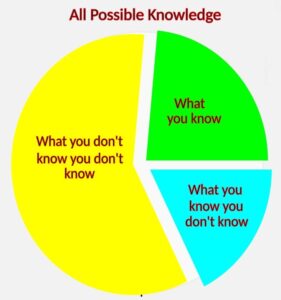
– How It Grew This Way –
A sage once said that the only thing permanent in the world is change, and mobile home parks would be a good example. A good orientation starts with a historical narrative. You will learn how the industry developed and how to identify the 3 major systems of park business.
The Early History – Car Parks
There is a long history of people renting land so they can park their vehicles and get some rest. There were “car parks” during the great depression that gave homeless people a place to park with safety and convenience.
From Car Parks to Travel Trailers
After WW II, travel-trailers became popular and parks were built to accommodate them. The trailers were unhitched from the cars to set up temporary housekeeping. The freed car could be used for day trips away from the parked vacation home.
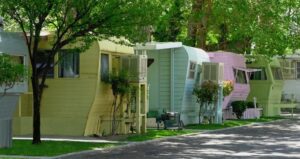
Some vacationers liked the towable trailer lifestyle and stayed. Today, you may find a rare “trailer park” where these older, narrower traveling vehicles have become permanent fixtures.
The Homes Grow Larger and larger
Many parks continued to evolve to accommodate ever-larger homes. These newer homes evolved to look more like long houses than vacation travel trailers. The tow-friendly, streamlined metal exteriors were replaced by wood framing and pitched roofs, and they became so wide that they took up the entire lane on the road – or more! They could no longer be called trailers – they were small houses. They were slowly and carefully towed from the factory to their permanent location, often in a mobile home park.
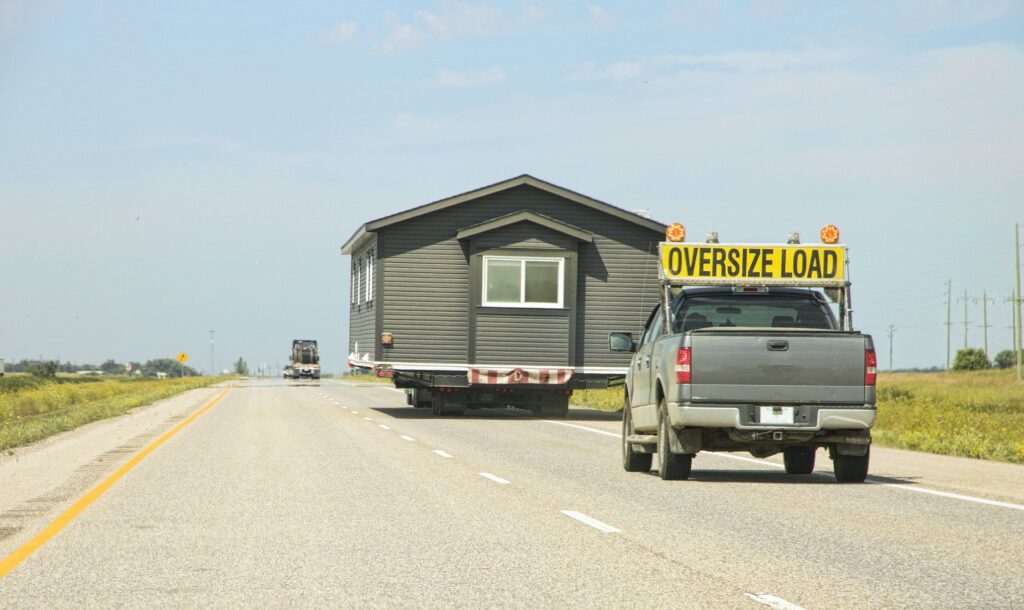
These large homes sat on a metal chassis. Temporary wheels and tow bar were welded to the chassis for towing and then removed when the home was permanently sited on the mobile home lot.
The large houses required towing by special diesel trucks and experienced drivers. To make the operation safe and legal, they secured special road permits and escort vehicles bearing “wide load” warning signs. Some governments require wide load towing to be done late at night to prevent traffic jams. The homeowner could no longer tow these huge homes with their personal truck or auto – the operation had to be done by professionals.
Once the house arrives at the mobile home park lot, it remains on its metal chassis. Before removing the wheels and axles, support piers are installed underneath, keeping the heavy home at towing height. Deck platforms and stairs provide access to the high doorways.
This is a distinction of a manufactured mobile home – it rests on a metal chassis held up by pillars with the floor about three to four feet above ground. The gap between the home and the ground is usually covered by skirting with stair steps and decks leading up to the entrances.
Table: Differences Between Trailers and Manufactured Mobile Homes
Difference |
Trailer or RV |
Manufactured Mobile Home |
|---|---|---|
Type of Shelter |
Temporary, often used for travel and recreation. Most RV owners don’t refer to their travel vehicles as “homes”. Often there are local limits on how long the vehicle can stay in the park |
Permanent long-term residence. A complete house on rented land. Serves as a mailing address. Residents vote in local elections and attend local schools. All the attributes of homeownership. Residents call them “homes” |
Mobility |
Easily moved – towed by conventional auto or pickup truck. More streamlined. Can move at freeway speeds |
Built to stay in one location. Large size requires professional diesel big rig with follow-on “wide load” vehicle. Slow moving towing operation to final site. Some jurisdictions require late night towing to prevent blocking traffic |
Purpose |
Vacationing, “vagabond” style travel – staying at temporary stopovers. Temporary living |
Permanent affordable housing for year-round living. Becomes mailing address and residents pay taxes and vote locally |
Size |
Narrow width for highway compatibility and streamlined for freeway speeds |
Single-wide or double-wide, often taking entire lane of road, or overhanging lane. Wood framing requires slow, steady transport to permanent site |
Interior |
Relatively cramped. Narrow width for mobility and lower towing weight. Special built-in furnishings |
Relatively spacious. Can rival the interior of a small home. Uses conventional furniture and appliances. Has multiple bedrooms and baths Has laundry, dining, etc. |
Cost / Financing |
Chattel. Owner buys and maintains vehicle. Traditional automobile style financing |
Chattel. Owner gets mortgage loan and maintains home. Interest rate is higher than site-built homes due to not being “real” property for real estate purposes (law changes proposed). Insurance may be required. Monthly lot rental fees add to overall costs |
Buying Process |
Usually purchased at a dealership similar to an automobile dealership |
Park homes are usually purchased on-site in the mobile home community. Agents can be retained to list and sell the home similar to site-built homes |
Build |
Chassis height is low (1 – 2 ft.) Vehicle may have dual wheels. Streamlined metal exterior |
Wood-framed house on a chassis. Floor height is at diesel tractor-trailer height (3ft or more). Gap to ground is concealed by skirting panels. Wheels and tow bar are removed at final destination |
Foundation |
No foundation. Vehicle rests on its tires and tow pivot. Sometimes leveled mechanically |
House chassis supported by multiple piers placed on ground along underside. Can have earthquake bracing. May need releveling over time. Lack of foundation puts home in the “chattel” category – not “real property” for real estate valuation purposes |
Location |
Kept in “parks”. Owner may store RV or trailer at his property or storage facility. When traveling, it can be hooked up to utilities at a vacation RV park |
Kept in permanent housing “tracts”. Approximately 31% of new manufactured mobile homes are permanently located in rented lots at a mobile home tract community – often incorrectly referred to as “parks” |
Difference |
Trailer or RV |
Manufactured Mobile Home |
Click thumbnail below to enlarge
*According to the Manufactured Housing Institute, June 2023 report, 31% of new homes are placed in communities. According to statistics at MH Village, 27% of new manufactured are permanently placed into mobile home parks. The majority are assumed to be situated on private land owned by the mobile home owner. This web site is focused on homeowners living in a park where they rent land.
The Homes Grow Wider and Wider
Two of these long, wide trailers are manufactured in halves and then towed to a park and joined together to make a “double-wide” manufactured home. The interiors of such homes began to rival those of small site-built houses. Now owners could have three bedrooms, a master bedroom, a master bath, a dining room, a living room and a full-service kitchen and laundry. These large homes were not made for traveling vacationers but to meet a niche in the housing market for permanently placed “affordable housing”.
Video: Tour of a manufactured home interior (AKA “mobile” home)
The homes connect to the park’s utility infrastructure and provide the owners with the creature comforts of permanent livable housing. Current double-wide manufactured mobile homes can range in size from around 1,200 square feet to around 2,000 square feet. Today’s minimalists may find that a double-wide manufactured mobile home is actually too big!
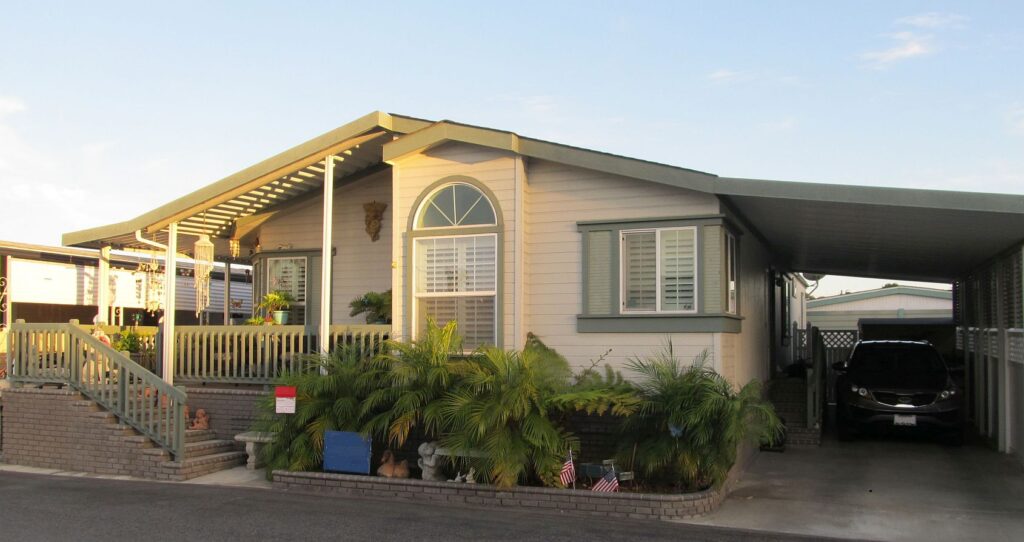
In Part 2, fundamental changes take place but the obsolete laws and notions continue.
Parks first served travelers with towable trailers. But the fundamentals changed to permanent residents in permanent houses that were too big to move.
Dramatic changes: Trailers become small houses; parks become settled housing tracts; residents become permanent, tax-paying citizens. But the old laws and thinking remain – holding back progress.
The park founders sell to large profit-seeking corporations that dramatically change the quality of life and stability of the manufactured housing tracts.
Homeowners and cities seek good solutions. Manufactured Home Parks provide good solutions—when not held back or exploited

